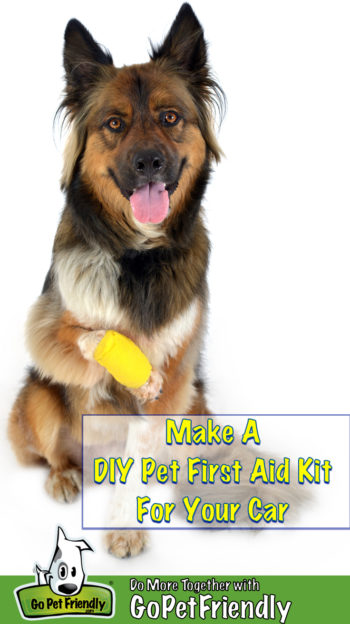How to make a pet first aid bag

How to make a pet first aid bag
As an experienced traveler, you likely already have a first aid kit in your car. But if you take your pets with you, it’s also important to make sure your kit is full of items for their needs.
People who like to go on road trips know how important it is to keep a first aid kit in their car. Carrying the essentials to treat headaches or dressing wounds can prevent minor illnesses and injuries from becoming more serious. The same goes for your travel companions! If you’re traveling with pets, we’ll help make sure your pet’s first aid kit is stocked with the items you may need to help them.
How to make a pet first aid kit
It’s easy to find a pet first aid kit that you can buy. It has the basics, but you still need to make a few important additions to complete your collection.
If you are willing to invest more time, it is often best to start from scratch and gather everything you need to make your own pet first aid kit. Fortunately, you probably already have many items on hand!
Even before you start collecting first aid supplies, it’s important to know how to use them. The Pet First Aid Book is a useful reference. And if you keep it with your group, you’ll be able to quickly review any actions you need to help your pet.
In a waterproof container or bag, also include your vet’s phone number, the APSCA poison control hotline (800-426-4435), your pet’s vaccination certificates, and copies of other important medical records.
Wound care
The most common pet injuries are cuts, scrapes, and torn toenails, so let’s start from there. When dealing with one of these injuries, you’ll want to stop the bleeding and clean and cover the wound so a professional can examine it. Here are the supplies your pet’s first aid kit should include for these injuries:
pharmaceutical
Your pet’s first aid kit should also include some medications. These should only be given if your vet or poison control center tells you to do so.
- Hydrogen peroxide (3% solution) – to induce vomiting, as directed by a specialist
- Diphenhydramine (Benadryl®) – for allergic reactions, if directed by a veterinarian
Other useful items
It’s hard to anticipate all of the things your pet could get in while you’re out and about. Having the following items in a pet first aid kit can be useful in a variety of situations:
Be prepared to visit the vet
If your pet is injured or sick, there is a good chance that you will see a vet. In this case, you will be happy to have your pet’s medical records, scanned to a USB drive, in your pet’s first aid kit.
Having all of your pet’s vaccination and health information will allow your vet to quickly assess your pet’s condition and begin treatment.
It’s scary when your travel companion is injured or sick. But when you’re ready with a little first aid knowledge, a good pet first aid kit, and information for your vet, you can stay calm and focus on helping your pet.




